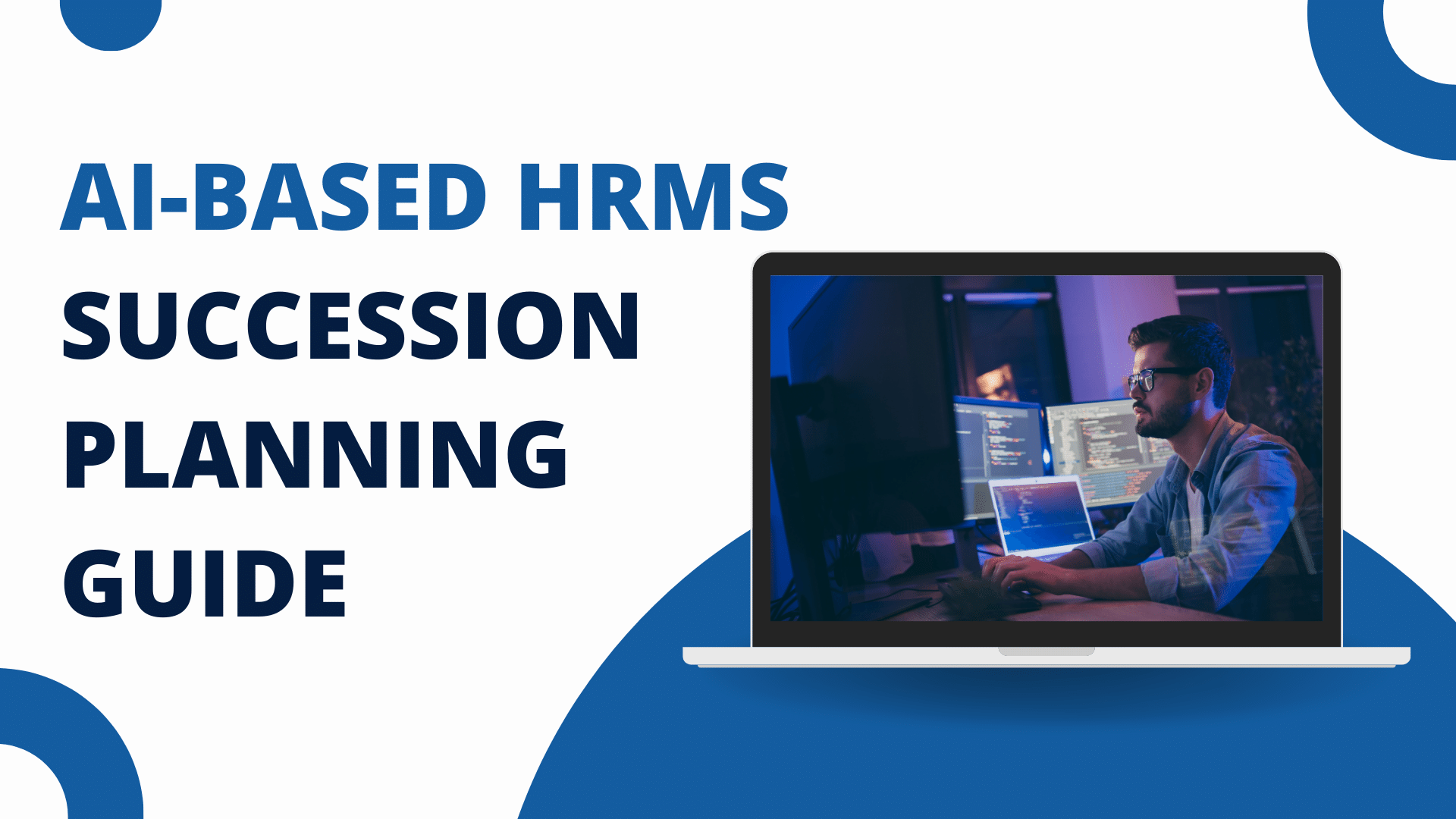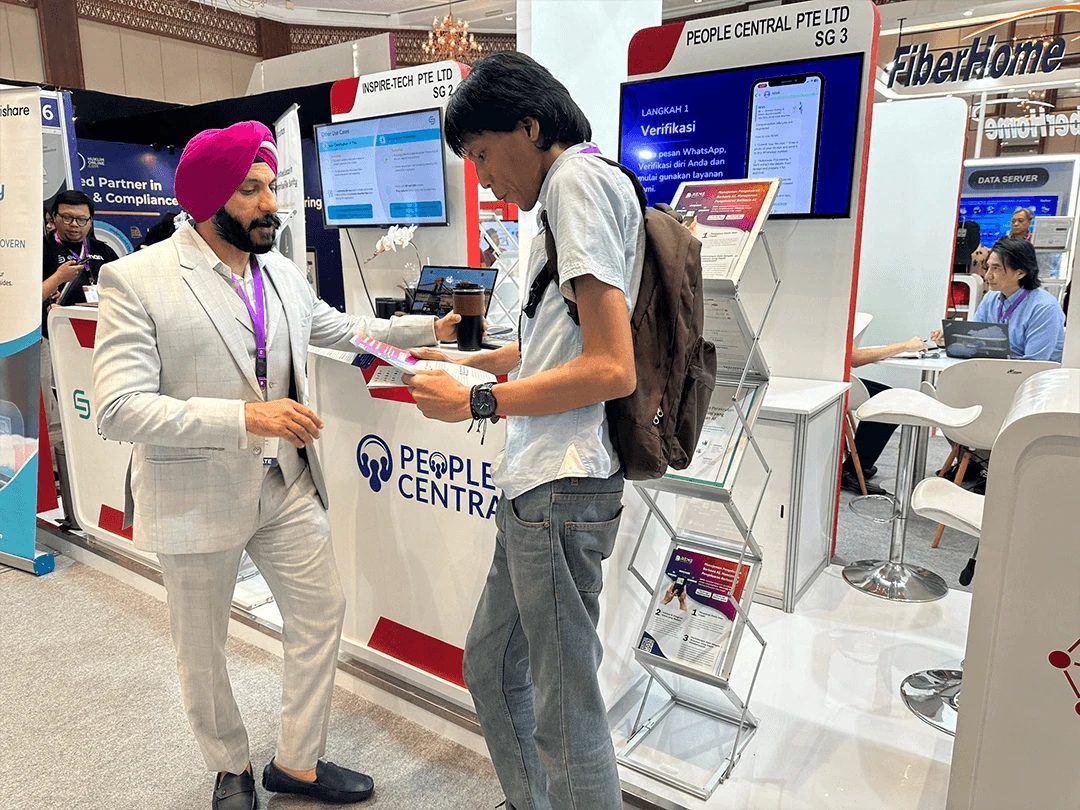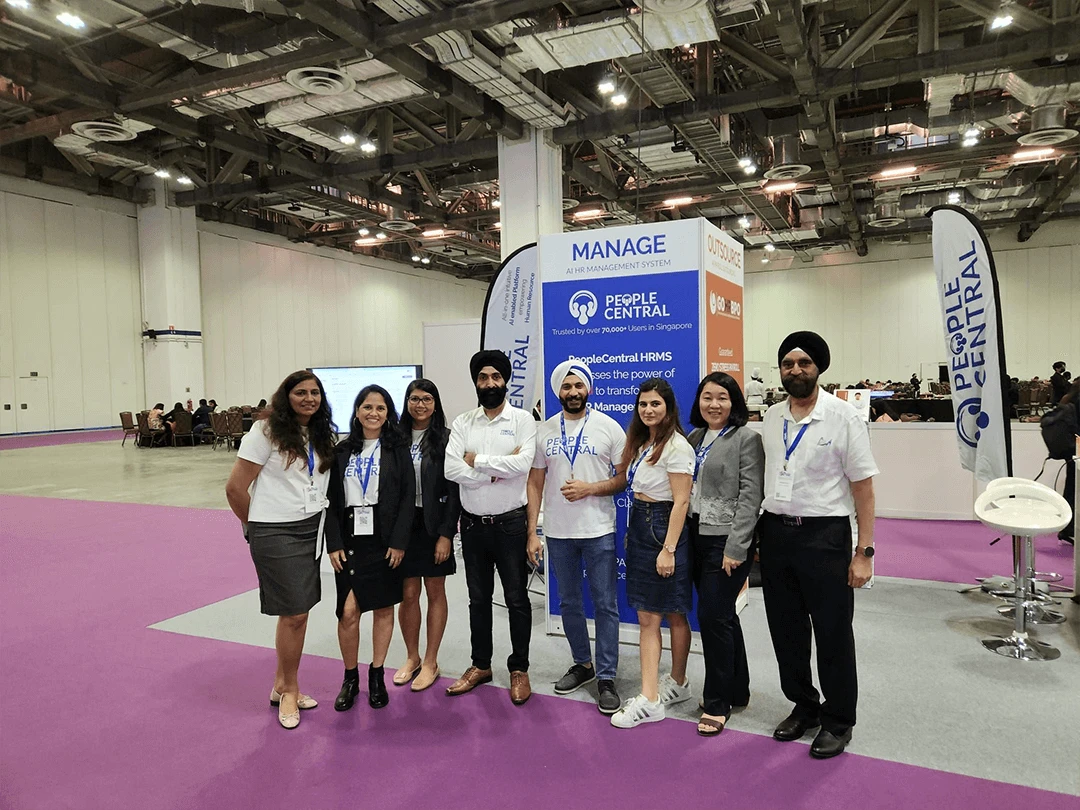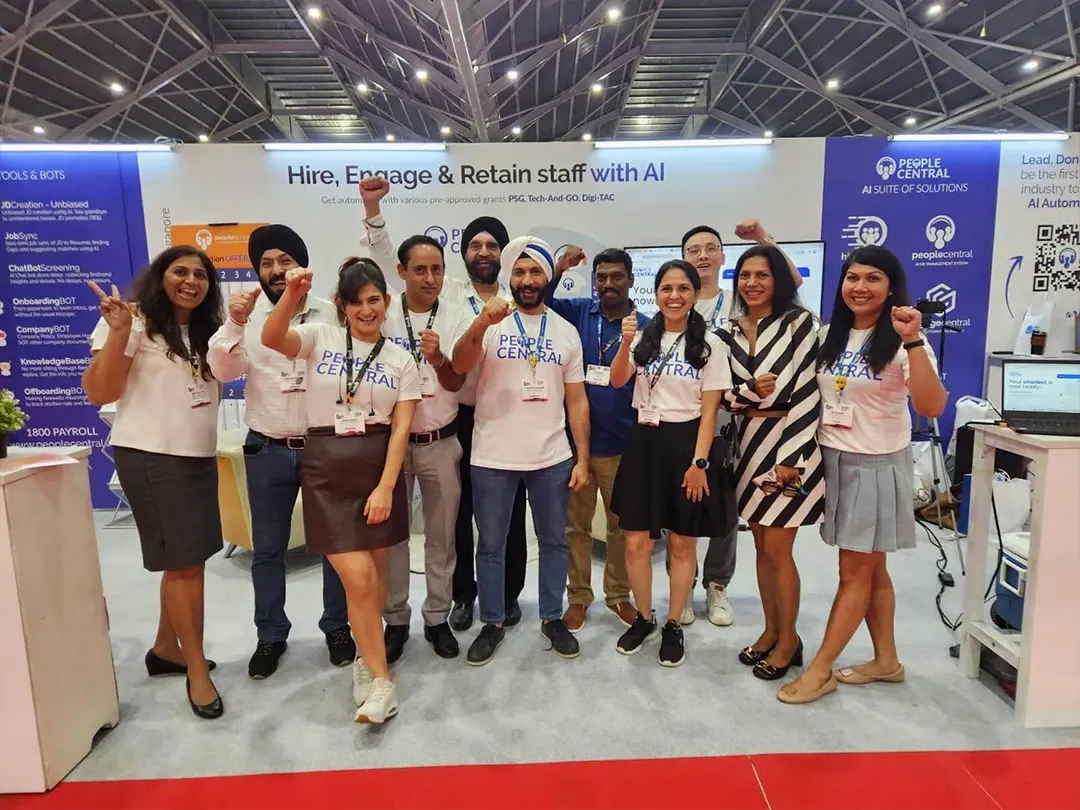AI-based succession planning in HRMS can effectively identify and groom potential leaders. This streamlines the selection process and ensures a smooth transition of key roles within the company. AI helps to analyze employee data, assess their skills and competencies, performance reviews and predict future performance. This way, they can nurture talent and make informed decisions with valuable insights. Companies can ensure a steady pipeline of capable individuals ready to take on leadership positions.
The AI-driven solution brings numerous key benefits to an organization’s business intelligence. It eliminates bias with objective data analysis and machine learning algorithms. This helps to identify high-potential employees who may have been overlooked. Also, AI-based systems provide real-time insights that enable organizations to adapt strategies.
Furthermore, AI-powered algorithms accurately forecast skill gaps and develop targeted training programs to bridge them. This ensures successors are well-equipped and have comprehensive guidelines to facilitate a smooth handover. It is essential to evaluate and refine algorithms based on feedback and new data for optimal results.
Understanding Succession Planning in AI-Based HRMS
To understand succession planning in HRMS and its importance, delve into the section “Understanding Succession Planning in HRMS.” Explore the benefits of this practice and discover how it can help organizations prepare for smooth transitions and strategic workforce development.
Importance of Succession Planning in AI-Based HRMS
Succession planning is a crucial part of HRMS. It enables the smooth transition of key roles of administrative tasks within an organization, making sure there’s continuity and stability. Without it, organizations may find difficulty in identifying and developing leaders, resulting in a lack of talented people to occupy important responsibilities. This can be damaging to the organization’s growth and success.
One reason why succession planning is so crucial in HRMS is that it allows organizations to recognize potential talent early on and cultivate them for future leadership positions. By spotting high-potential employees and giving them proper training and opportunities, organizations can guarantee a steady supply of capable individuals who can take up leadership roles without a hitch when needed.
Further, succession planning stops disruptions in operations due to unexpected departures or retirements of key personnel. By having a proper plan in place, organizations can fill vacancies with the right people quickly, reducing any negative effect on productivity or efficiency.
Plus, effective succession planning enhances employee engagement and commitment. When employees see a clear career progression within an organization, they are more likely to remain dedicated and motivated. This lowers turnover rates and saves the organization time and resources usually spent on recruiting and training new employees.
An example that shows the importance of succession planning entails a multinational corporation readying for the retirement of its long-time CEO. Through meticulous succession planning, they found an internal candidate who had been trained for leadership over several years. This individual transitioned into the role effortlessly, without any interference to the company’s operations or culture.
AI-Based Succession Planning in HRMS
To optimize succession planning in HRMS, dive into how AI-powered HR tools and advanced technology enhances the process. Discover the benefits of AI-based succession planning, where technology empowers HR teams to identify and develop future leaders seamlessly. Harness the potential of AI to streamline succession planning and reap the rewards of a well-prepared, sustainable talent pipeline.
How AI Technology Enhances Succession Planning
AI tech is revolutionizing succession planning. It provides data-driven insights into employee performance and identifies potential successors. AI algorithms simplify skill gap analysis and offer personalized plans. These enhancements maximize HRMS efficiency.
Organizations can leverage AI-powered tools to automate talent identification. These tools analyze employee data and historical performance, to find the highest-potential individuals with necessary skills. This eliminates bias and ensures fairness based on merit.
AI also enables proactive talent development. By recognizing skill gaps, organizations can give targeted training and development opportunities to prepare potential successors. This boosts employee engagement and reduces time to fill key positions.
Integrating AI with performance management systems is another suggestion. This connects performance data and succession planning algorithms, making it simple to identify top performers ready for advancement. This streamlines the process and helps nurture top talent.
AI technology enhances succession planning. It provides data-driven insights, automates talent identification, facilitates proactive development, and links with performance management systems. These approaches optimize HRMS efficiency and ensure organizations are prepared for future leadership transitions.
Benefits of AI-Based Succession Planning in HRMS
The AI-driven solution in HRMS is a revolution for organizations, delivering multiple impressive advantages.
- Accurate talent acquisition: AI examines large quantities of data to spot ideal candidates with the skills and abilities necessary for leadership roles. It enhances recruitment process
- Proactive preparation: By forecasting future talent needs, AI helps firms proactively cultivate employees’ abilities and bridge any potential gaps.
- Efficient processes: Automating administrative jobs, payroll processing, recruitment systems, and career development processes gives HR staff more time to focus on strategic projects and employee growth.
Moreover, AI-based succession planning in HRMS takes into account aspects such as performance figures, career ambitions, and even character traits to make informed decisions about succession. By using advanced algorithms, businesses can precisely measure an individual’s preparedness for promotion or transition to a new role.
A real story demonstrating the power of AI-based succession planning includes a multinational corporation fighting to identify suitable heirs for key roles. Unhappy with traditional methods, they adopted an AI-driven HRMS that evaluated employees based on numerous parameters like performance metrics and potential appraisals. The system’s proposals effectively found high-potential personnel who were later groomed for leadership roles. This resulted in improved succession results and a smoother transfer of essential responsibilities within the organization.
Challenges and Limitations of AI-Based Succession Planning in HRMS
To address the challenges and limitations of AI-based succession planning in HRMS, delve into the ethical considerations involved. Understand the potential dilemmas that arise when using AI algorithms to make high-stakes decisions about employees’ career trajectories. Examine how ethical concerns impact the effectiveness and fairness of AI-based succession planning in HRMS.
Ethical Considerations in AI-Based Succession Planning
Ethical concerns are key when it comes to AI-based succession planning. HR professionals and organizations must be conscious of the implications of utilizing artificial intelligence for these purposes. This could include guaranteeing the AI optimization algorithms used for assessing potential candidates are free of bias and prejudice. Transparent use of AI technology is also necessary, and employee privacy must be secured.
Job security and staff morale is an important ethical factor to consider. AI can streamline processes and enhance efficiency, yet employees may be worried about job stability and the replacement of human decision-making. HR professionals should communicate with employees and address their apprehensions, emphasizing the significant role of human interaction in decision-making.
Data quality is another major ethical consideration. Data used for succession planning must be accurate, dependable, and up-to-date. If the data is faulty or incomplete, incorrect assessments and unfair treatment of employees may occur. Keeping data integrity is essential and HR professionals should regularly review and update it to ensure fairness in succession planning processes.
Pro Tip: Evaluating and monitoring the performance of AI algorithms used for succession planning can help spot any biases or unfairness in the system, allowing for any required adjustments to be done quickly.
Best Practices for Implementing AI-Based Succession Planning in HRMS
To ensure the successful implementation of AI-based succession planning in HRMS, address critical aspects such as data privacy and security. Also, prioritize the training and development of employees for seamless AI integration.
Ensuring Data Privacy and Security
Today’s tech-savvy world necessitates the utmost caution to protect data privacy and security. Especially when implementing AI-based HRMS succession planning.
Organizations are turning to artificial intelligence to simplify HR processes and make data-driven decisions. To safeguard sensitive info, encryption, multi-factor authentication, and role-based access control are musts. Security audits and employee training on privacy best practices further boost the security framework.
Organizations must also align with data privacy regulations like GDPR and CCPA. This demonstrates commitment to individual rights and ensures personal data privacy.
Human aspects of data privacy should not be ignored. Build a culture of awareness among employees. Regular communication and workshops help instill privacy-conscious practices.
A global financial institution experienced a breach in 2019 that exposed customer records with sensitive personal information. This caused reputational damage, regulatory investigations, and hefty fines.
The company implemented comprehensive encryption protocols and other advanced security features after the breach. This reassured customers that their info was being protected.
Training and Development of Employees for AI Integration
Integrating AI into HRMS requires proper training and development of employees. Here are 3 essential points to consider:
- Offer teaching programs that explain AI and its use in HR. This helps employees understand how AI can improve their complex tasks.
- Give employees hands-on experience with AI tools and technologies. This makes sure they know how to use AI-based systems well.
- Encourage a culture of learning by motivating employees to stay informed on the newest AI advancements. Do this through workshops, webinars, or online courses.
Also, organizations must make an atmosphere where employees feel good about exploring and experimenting with AI integration. By promoting a learning attitude, organizations can use AI for conceptual analysis.
Pro Tip: Set up a team/department that specializes in AI integration. Give ongoing support to employees and employee records management. Having a specialist available helps whenever needed.
Case Studies: Successful Implementation of AI-Based Succession Planning in HRMS
Case studies unveil that AI-based succession planning in Human Resource Management System is a successful implementation. This approach uses AI to identify and develop candidates for key roles. AI algorithms analyze employee data, performance metrics and skill gaps to find high-potential individuals. This helps identify future leaders and ensures a seamless transition when an executive departs.
AI-based succession planning also continuously evaluates employees’ performance and potential. Unlike traditional methods, this AI can monitor employees in real-time. This allows for more accurate identification of high-potential talent. Companies can be proactive in identifying successors and planning their development.
A multinational company experienced the effectiveness of AI-based succession planning and talent management. They needed to fill critical positions but lacked suitable internal talent. So, they implemented an AI-based HRMS system. This analyzed employee data and identified potential successors inclusive of AI-powered attendance tracking. By leveraging AI algorithms, the company found high-potential individuals who would have been overlooked using traditional methods. They provided targeted development to enhance their skills. This resulted in a reduction of talent gaps and a smoother transition when senior executives retired or moved on.
Conclusion
In the ever-changing Human Resource Management world, AI-based solutions for human resource management solution is a transformational player. AI and natural language processing algorithms help companies accurately identify and develop future leaders quickly.
This move in HRMS gives organizations the advantage of using AI algorithms to analyze performance, skills, and feedback data. It gives HR pros insight into each person’s potential for leadership roles, and the ability to plan succession with more accuracy, especially in the employee onboarding process.
What’s more, Artificial Intelligence based succession planning is fair and unbiased – unlike traditional methods which can be subjective and favoritism-driven. AI algorithms remove human bias, and decisions are based on objective data and criteria. This lets every employee have a level playing field for success.
An example of this? A large multinational corporation was having difficulty finding successors for key roles. With manual assessments and subjective evaluations, they got unreliable results and missed potential.
But after implementing an AI-based succession planning system in their Human Resources Management System platform conclusive of virtual assistants, performance management, biometric time clocks, and AI-powered chatbots. They saw big improvements in their talent management process. Algorithms identified those with the right competencies for leading positions. It led to higher employee engagement with efficient employee records management, lower turnover rates, and long-term success.
FAQs
Ques 1. What is AI-based succession planning in HRMS?
Ans 1. AI-based succession planning in human resource management systems refers to the use of artificial intelligence technology to identify and develop potential successors for key positions within an organization. It involves analyzing data such as skills, performance, and career aspirations to predict and plan for future leadership requirements.
Ques 2. How does AI help in succession planning?
Ans 2. AI helps in succession planning by automating the process of identifying and evaluating potential successors. It can analyze large volumes of data to identify individuals with the right skills, experience, and potential for leadership roles. AI algorithms can also consider factors such as performance, engagement, and organizational fit to make accurate predictions.
Ques 3. What are the benefits of using AI in succession planning?
Ans 3. Using Artificial Intelligence in succession planning offers several benefits. It allows organizations to identify high-potential employees more effectively, reducing bias and subjectivity during onbaording process. AI-powered tools can also provide actionable insights into skill gaps and development opportunities, expense Management, enabling targeted training and development initiatives. Additionally, AI-powered system planning enhances organizational agility and reduces the risk of leadership gaps.
Ques 4. Is AI-based succession planning in HRMS reliable?
Ans 4. AI-based succession planning can be highly reliable when implemented correctly. However, it is essential to ensure the accuracy and relevance of the data used to train the AI algorithms. Regular monitoring and updating of the system are necessary to refine the predictions based on real-time inputs. Human intervention and Knowledge Management are also crucial to validate the AI outputs and make informed decisions.








 5
5


























